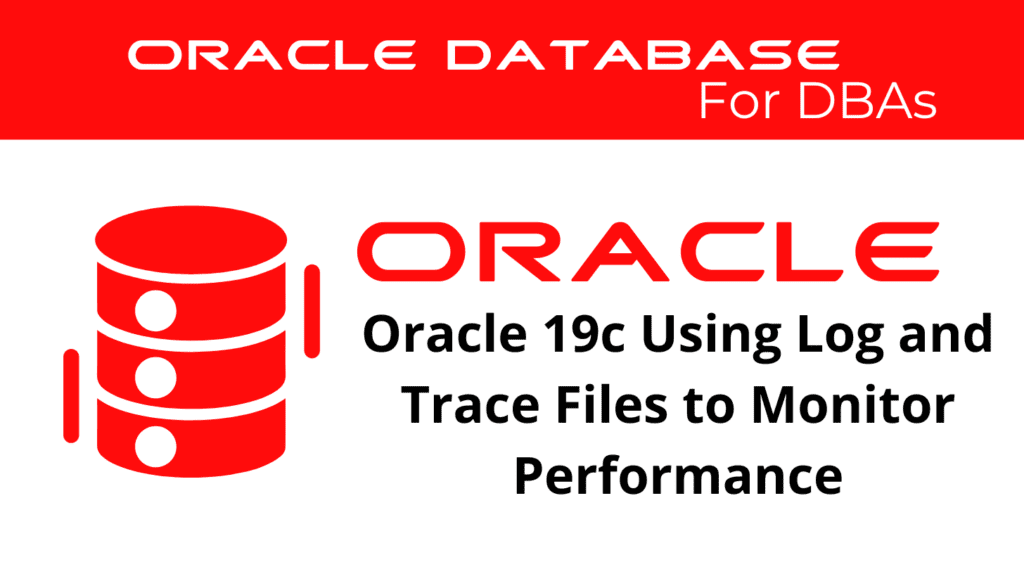
Monitoring database performance is crucial for maintaining a healthy and efficient Oracle 19c environment. Using log and trace files, DBAs can gain insights into the internal workings of the database, diagnose issues, and implement performance optimizations. This blog will explore how to effectively use log and trace files to monitor performance, focusing on Oracle performance monitoring and database tuning.
Understanding Log Files
Log files in Oracle 19c provide a detailed record of database activities and events. These logs are essential for diagnosing issues and monitoring the overall health of the database. Key types of log files include:
- Alert Log: The alert log records significant database events, such as startup and shutdown activities, critical errors, and administrative operations. Monitoring the alert log helps identify issues that require immediate attention.
tail -f $ORACLE_BASE/diag/rdbms/<db_name>/<db_name>/trace/alert_<db_name>.log - Listener Log: This log records information about Oracle Net Services, including connection requests and listener activities. Monitoring the listener log helps diagnose network-related issues.
tail -f $ORACLE_BASE/diag/tnslsnr/<host_name>/listener/trace/listener.log
Monitor Logs oracle Utilizing Trace Files
Trace files provide detailed information about specific database processes and sessions. These files are invaluable for in-depth performance analysis and troubleshooting. Key types of trace files include:
- User Trace Files: Generated for individual user sessions, these files capture detailed information about SQL execution, wait events, and resource usage. You can enable user trace files by executing:
ALTER SESSION SET sql_trace = TRUE; - Background Trace Files: These files are generated by background processes (such as DBWR, LGWR, and SMON) and provide insights into their operations. Monitoring background trace files helps identify issues with these critical processes.
📢 You might also like: Oracle 19c Using the Alert Log to Monitor Performance (Category: Performance Management and Tuning)
Monitor Logs oracle – Analyzing Log and Trace Files
To effectively monitor and diagnose performance issues, you need to analyze log and trace files systematically. Follow these steps to analyze these files:
- Log Analysis: Regularly review the alert log and listener log to identify errors and warnings. Look for patterns and recurring issues that may indicate underlying problems.
- Trace File Analysis: Use Oracle utilities like TKPROF to convert raw trace files into readable reports. Analyze these reports to identify performance bottlenecks and optimize SQL execution.
tkprof trace_file.trc output_file.prf sys=no sort=execnt
Monitor Logs oracle – Best Practices for Performance Monitoring
Adhering to best practices ensures effective use of log and trace files for performance monitoring. Key best practices include:
- Regular Monitoring: Regularly monitor log and trace files to identify and address issues proactively. Set up automated alerts for critical errors.
- Comprehensive Analysis: Combine log and trace file analysis with other performance monitoring tools, such as AWR and Statspack, for a holistic view of database performance.
- Proactive Optimization: Use insights from log and trace file analysis to proactively optimize database operations, such as tuning SQL queries and adjusting resource allocations.
See more on Oracle’s website!
Conclusion
In conclusion, monitor log and trace files in Oracle 19c is essential for effective performance monitoring and database optimization. By understanding the types of log and trace files, utilizing them for detailed analysis, and adhering to best practices, DBAs can maintain a healthy and efficient database environment. Regular monitoring, comprehensive analysis, and proactive optimization are key to successful Oracle performance tuning.
Be Oracle Performance Management and Tuning Certified Professional, this world is full of opportunities for qualified DBAs!





